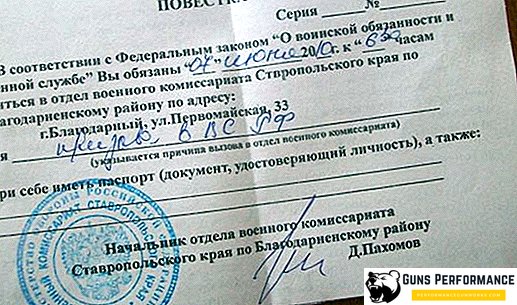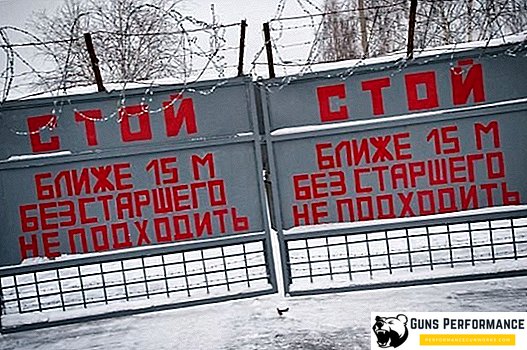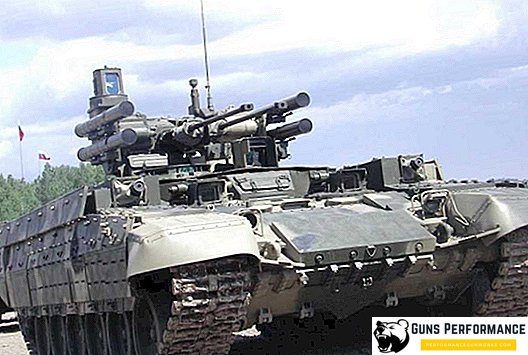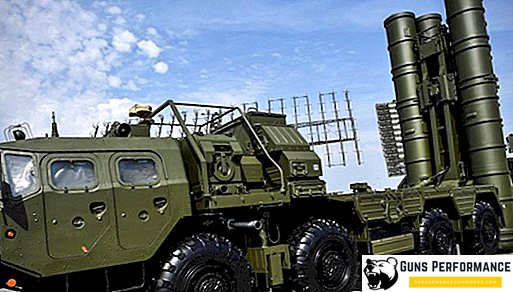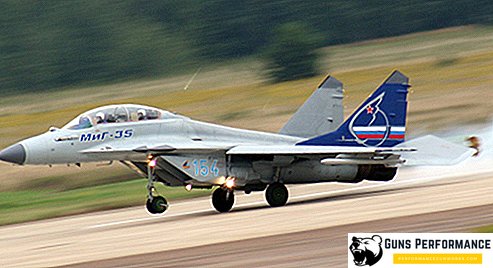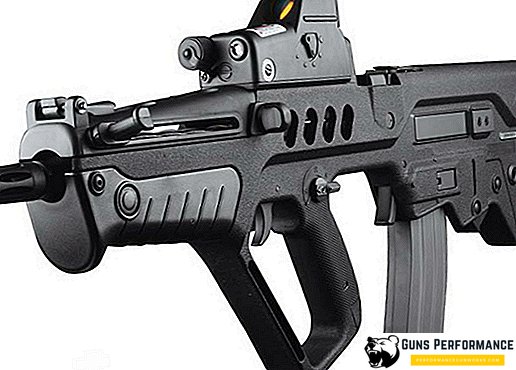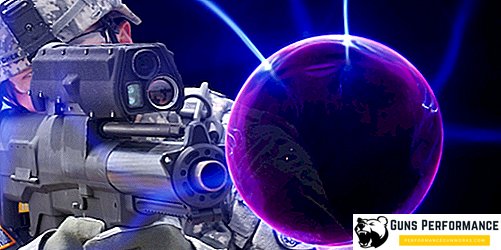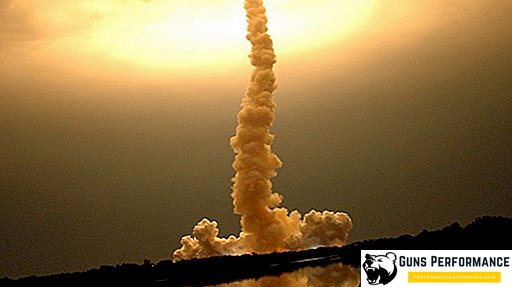
Not so long ago, Lieutenant-General Viktor Poznikhir, head of the operational department of the Russian General Staff, told reporters that the main goal of creating an American missile defense system is to substantially neutralize Russia's strategic nuclear potential and to almost completely eliminate the Chinese missile threat. And this is far from the first sharp statement of Russian high-ranking officials on this subject, few US actions cause such irritation in Moscow.
Russian military and diplomats have repeatedly stated that the deployment of the American global missile defense system will lead to the imbalance of the delicate balance between nuclear states, which was formed during the Cold War.
The Americans, in turn, argue that the global missile defense is not directed against Russia, its goal is to protect the "civilized" world from rogue states, such as Iran and North Korea. At the same time, the construction of new elements of the system continues at the very Russian borders - in Poland, the Czech Republic and Romania.

Expert opinions on missile defense in general and the US missile defense system in particular are quite different: some see American actions as a real threat to Russia's strategic interests, while others speak of the ineffectiveness of the US missile defense against the Russian strategic arsenal.
Where is the truth? What is the US missile system? What does it consist of and how does it work? Is there a missile defense of Russia? And why does a purely defensive system cause such an ambiguous reaction from the Russian leadership — what’s the catch?
PRO history
Missile defense is a whole range of measures aimed at protecting certain objects or territories from being hit by rocket weapons. Any missile defense system includes not only systems that directly destroy missiles, but also complexes (radars and satellites) that provide missile detection, as well as powerful computers.

In the mass consciousness, the missile defense system is usually associated with countering the nuclear threat posed by ballistic missiles with a nuclear warhead, but this is not entirely true. In fact, missile defense is a broader concept, missile defense is any type of defense against the enemy’s missiles. It can also include active defense of armored vehicles against ATGMs and RPGs, and air defense weapons capable of destroying enemy tactical ballistic and cruise missiles. So it would be more correct to divide all missile defense systems into tactical and strategic, and also to single out self-defense systems against missiles as a separate group.

Rocket weapons were first used massively during World War II. The first anti-tank missiles, the MLRS, the German V-1 and V-2 appeared, killing residents of London and Antwerp. After the war, the development of missiles went at an accelerated pace. We can say that the use of missiles has radically changed the way we conduct combat operations. Moreover, very soon missiles became the main means of delivering nuclear weapons and turned into an important strategic tool.
Appreciating the experience of the Hitlerites' combat use of the V-1 and V-2 missiles, the USSR and the USA, almost immediately after the end of the Second World War, began creating systems that could effectively deal with the new threat.
In 1946, the US Air Force began developing the first missile defense system, which consisted of two types of anti-missile systems: the MX-794 Wizard and the MX-795 Thumper. Over their creation worked the company General Electric. This system was developed as a means of fighting the enemy’s ballistic missiles, its antimissiles should be equipped with a nuclear warhead.
This program was never implemented, but it allowed the Americans to gain considerable practical experience in creating anti-missile systems. This project had no actual purpose, since at that time there were no intercontinental ballistic missiles and nothing threatened the territory of the United States.
ICBMs appeared only in the late 50s, and that was when the development of a missile defense system became an urgent need.

In the United States in 1958, the Nike-Hercules anti-aircraft missile system MIM-14 was developed and adopted, which could be used against enemy nuclear warheads. Their defeat also occurred at the expense of the nuclear warhead of the anti-missile missile, since this air defense system was not very precise. It should be noted that interception of a target flying at a huge speed at an altitude of tens of kilometers is a very difficult task, even at the present level of technology development. In the 1960s, it could be solved only with the use of nuclear weapons.

The further development of the Nike-Hercules MIM-14 system was the LIM-49A Nike Zeus complex, its testing began in 1962. Zeus anti-missiles were also equipped with a nuclear warhead, they could hit targets at altitudes up to 160 km. Successful tests of the complex were conducted (without nuclear explosions, of course), but the effectiveness of such a missile defense was still a very big question.

The fact is that in those years, the nuclear arsenals of the USSR and the USA grew at an unimaginable pace, and no missile defense could protect against the armada of ballistic missiles launched in the other hemisphere. Moreover, in the 1960s, nuclear missiles learned how to throw out numerous false targets that were extremely difficult to distinguish from real warheads. However, the main problem was the imperfection of the antimissiles themselves, as well as target detection systems. Deploying the Nike Zeus program should have cost the US taxpayer $ 10 billion - a gigantic amount at the time, and this did not guarantee sufficient protection from Soviet ICBMs. As a result, the project was abandoned.

In the late 60s, Americans launched another missile defense program called Safeguard - "Precaution" (originally called Sentinel - "All-Time").
This missile defense system was supposed to protect the areas of deployment of American ICBMs of the mine base and, in the event of war, ensure the possibility of launching a missile strike.
The Safeguard was armed with two types of antimissile missiles: the heavy Spartan and the lightweight Sprint. Anti-missiles "Spartan" had a radius of 740 km and were supposed to destroy the enemy’s nuclear warheads still in space. The task of the lighter "Sprint" missiles was to "finish" those warheads that were able to pass by the "Spartans". In space, warheads were to be destroyed using hard neutron radiation fluxes that were more efficient than megaton nuclear explosions.
In the early 1970s, the Americans began the practical implementation of the Safeguard project, but built only one complex of this system.

In 1972, one of the most important nuclear weapons control documents, the Treaty on the Limitation of Anti-Ballistic Missile Systems, was signed between the USSR and the USA. Even today, almost fifty years later, it is one of the cornerstones of the global nuclear security system in the world.
According to this document, both states could deploy no more than two missile defense systems, the maximum ammunition of each of them should not exceed 100 antimissile systems. Later (in 1974) the number of systems was reduced to one unit. The United States covered the safeguard area of the ICBM in North Dakota with the Safeguard system, and the USSR decided to protect the capital of the state, Moscow, from a missile strike.
Why is this treaty so important for the balance between the largest nuclear states? The fact is that from about the mid-60s it became clear that a large-scale nuclear conflict between the USSR and the USA would lead to the complete destruction of both countries, therefore nuclear weapons became a kind of deterrent. Having deployed a sufficiently powerful missile defense system, any of the opponents could be tempted to strike first and hide from the "otvetka" using anti-missiles. The refusal to defend one’s own territory against imminent nuclear annihilation guaranteed the extremely cautious attitude of the leadership of the States Signatories to the red button. For the same reason, the current deployment of NATO missile defense is causing such concern in the Kremlin.
By the way, the Americans did not deploy the Safeguard ABM system. In the 1970s, Trident ballistic sea-based missiles appeared in them, so the US military leadership considered it more appropriate to invest in new submarines and SLBMs than to build a very expensive missile defense system. And the Russian units are still protecting the sky of Moscow (for example, the 9th missile defense division in Sofrino).

The next stage in the development of the US missile defense system was the SDI program ("Strategic Defense Initiative"), initiated by the fortieth US President Ronald Reagan.
It was a very large-scale project of the new US missile defense system, which was absolutely inconsistent with the 1972 Treaty. The PIO program envisaged the creation of a powerful, layered missile defense system with space-based elements, which was supposed to cover the entire territory of the United States.

In addition to antimissiles, this program provided for the use of weapons based on other physical principles: lasers, electromagnetic and kinetic weapons, railguns.
This project was never implemented. Before its developers have encountered numerous technical problems, many of which have not been solved today. However, the developments of the SDI program were later used to create the US national missile defense, the deployment of which continues to this day.
Immediately after the end of the Second World War, the creation of protection against missile weapons began in the USSR. Already in 1945, specialists from the Zhukovsky Air Force Academy began work on the Anti-Fau project.

The first practical development in the field of missile defense in the USSR was the "System A", the work on which was conducted in the late 50s. A series of tests of the complex was carried out (some of them were successful), but due to the low efficiency, the “System A” was never put into service.

In the early 1960s, the development of a missile defense system for the protection of the Moscow Industrial District began, it was named A-35. From that moment until the collapse of the USSR, Moscow was always covered with a powerful anti-missile shield.
The development of the A-35 was delayed, this missile defense system was put on combat duty only in September 1971. In 1978, it was upgraded to the A-35M modification, which remained in service until 1990. The radar complex "Danube-3U" was on alert until the beginning of the two thousand years. In 1990, the A-35M ABM system was replaced by the Amur A-135. The A-135 was equipped with two types of antimissiles with a nuclear warhead and a range of 350 and 80 km.

The A-135 system should be replaced by the newest Samolet-M A-235 anti-missile defense system, which is currently at the testing stage. It will also be armed with two types of anti-missile missiles with a maximum range of 1 thousand km (according to other sources - 1.5 thousand km).

In addition to the above-mentioned systems, in the USSR, at different times, work was also being carried out on other projects of defense against strategic missiles. We can mention Cheleomey missile defense "Taran", which was supposed to protect the entire territory of the country from American ICBMs. This project proposed to install several powerful radars in the Far North, which would control the most possible trajectories of American ICBMs - across the North Pole. It was supposed to destroy enemy missiles with the help of the most powerful thermonuclear charges (10 megatons) installed on anti-missiles.

This project was closed in the mid-60s for the same reason as the American Nike Zeus - the Soviet and US missile and nuclear arsenals grew at an incredible pace, and no missile defense could not protect against a massive strike.

Another promising Soviet missile defense system, which never got into service, was the C-225 complex. This project was developed in the early 60s, later one of the C-225 anti-missile missiles found use as part of the A-135 complex.
American missile defense system
Currently, the world has deployed or is developing several missile defense systems (Israel, India, Japan, the European Union), but all of them have a small or medium range of action. Only two countries in the world have a strategic missile defense system - the United States and Russia. Before turning to the description of the American strategic missile defense system, a few words should be said about the general principles of operation of such complexes.

Intercontinental ballistic missiles (or their combat units) can be shot down at different parts of their trajectory: at the initial, middle, or final. The defeat of a rocket on takeoff (Boost-phase intercept) looks like the easiest task. Immediately after the launch, the ICBM is easy to track: it has a low speed, is not covered by false targets or interference. One shot can destroy all warheads that are installed on the ICBMs.
However, the interception at the initial stage of the rocket’s trajectory also has considerable difficulties, which almost completely level the above-mentioned advantages. As a rule, the areas of deployment of strategic missiles are located deep in the territory of the enemy and reliably covered by anti-aircraft and missile defense systems. Therefore, to approach them at the required distance is almost impossible. In addition, the initial stage of a rocket flight (acceleration) is only one or two minutes, during which it is necessary not only to detect it, but also to send an interceptor to destroy it. It is very difficult.
However, interception of ICBMs at the initial stage looks very promising, therefore, work on means of destroying strategic missiles during acceleration continues. Space-based laser systems look the most promising, but there are no operational complexes of such weapons yet.

Missiles can also be intercepted in the middle segment of their trajectory (Midcourse intercept), when the warheads have already separated from the ICBM and continue their flight into outer space by inertia. Interception in the middle segment of the flight also has both advantages and disadvantages. The main advantage of the destruction of warheads in space is the large interval of time that the missile defense system has (according to some sources up to 40 minutes), but the interception itself is associated with many complex technical issues. First, the warheads are of relatively small size, a special anti-radar coating and emit nothing into space, so they are very difficult to detect. Secondly, in order to make the missile defense operation even more difficult, any ICBM, except for the warheads themselves, carries a large number of false targets, indistinguishable from the real ones on radar screens. And thirdly: anti-missiles capable of destroying warheads in space orbit are very expensive.

Warheads can be intercepted after they enter the atmosphere (Terminal phase intercept), or in other words, at their last flight stage. It also has its pros and cons. The main advantages are: the ability to deploy a missile defense system on its territory, the relative ease of tracking targets, low cost of interceptor missiles. The fact is that after entering the atmosphere, lighter false targets are eliminated, which makes it possible to more confidently identify real warheads.
However, interception at the final stage of the trajectory of warheads and significant drawbacks. The main one is the very limited time that the missile defense system has - about a few tens of seconds. Destruction of warheads at the final stage of their flight is essentially the final line of missile defense.

In 1992, US President George W. Bush initiated the start of a program to protect the United States from a limited nuclear strike - this is how a non-strategic missile defense (NMD) project appeared.
The development of a national system of national missile defense began in the United States in 1999, after President Bill Clinton signed the corresponding bill. The goal of the program was the creation of such a missile defense system, which would be able to protect the entire US territory against ICBMs. In the same year, the Americans conducted the first test under this project: a Minuteman rocket was intercepted over the Pacific Ocean.
In 2001, the next owner of the White House, George W. Bush, announced that the missile defense system would protect not only America, but also its main allies, the first of which was the United Kingdom. In 2002, after the Prague Summit of NATO, the development of a military-economic rationale for the creation of a missile defense system for the North Atlantic alliance began. The final decision on the creation of a European missile defense was taken at the NATO summit in Lisbon, held in late 2010.

Неоднократно подчеркивалось, что целью программы является защиты от стран-изгоев вроде Ирана и КНДР, и она не направлена против России. Позже к программе присоединился ряд восточноевропейских стран, в том числе Польша, Чехия, Румыния.
В настоящее время противоракетная оборона НАТО - это сложный комплекс, состоящий из множества компонентов, в состав которого входят спутниковые системы отслеживания запусков баллистических ракет, наземные и морские комплексы обнаружения ракетных пусков (РЛС), а также несколько систем поражения ракет на разных этапах их траектории: GBMD, Aegis ("Иджис"), THAAD и Patriot.

GBMD (Ground-Based Midcourse Defense) - это наземный комплекс, предназначенный для перехвата межконтинентальных баллистических ракет на среднем участке их траектории. В его состав входит РЛС раннего предупреждения, который отслеживает запуск МБР и их траекторию, а также противоракеты шахтного базирования. Дальность их действия составляет от 2 до 5 тыс. км. Для перехвата боевых блоков МБР GBMD использует кинетические боевые части. Следует отметить, что на нынешний момент GBMD является единственным полностью развернутым комплексом американской стратегической ПРО.

Кинетическая боевая часть для ракеты выбрана не случайно. Дело в том, что для перехвата сотен боеголовок противника необходимо массированное применение противоракет, срабатывание хотя бы одного ядерного заряда на пути боевых блоков создает мощнейший электромагнитный импульс и гарантировано ослепляет радары ПРО. Однако с другой стороны, кинетическая БЧ требует гораздо большей точности наведения, что само по себе представляет очень сложную техническую задачу. А с учетом оснащения современных баллистических ракет боевыми частями, которые могут менять свою траекторию, эффективность перехватчиков еще более уменьшается.
Пока система GBMD может "похвастать" 50% точных попаданий - и то во время учений. Считается, что этот комплекс ПРО может эффективно работать только против моноблочных МБР.
В настоящее время противоракеты GBMD развернуты на Аляске и в Калифорнии. Возможно, будет создан еще один район дислоцирования системы на Атлантическом побережье США.

Aegis ("Иджис"). Обычно, когда говорят об американской противоракетной обороне, то имеют в виду именно систему Aegis. Еще в начале 90-х годов в США родилась идея использовать для нужд противоракетной обороны корабельную БИУС Aegis, а для перехвата баллистических ракет средней и малой дальности приспособить отличную зенитную ракету "Стандарт", которая запускалась из стандартного контейнера Mk-41.
Вообще, размещение элементов системы ПРО на боевых кораблях вполне разумно и логично. В этом случае противоракетная оборона становится мобильной, получает возможность действовать максимально близко от районов дислокации МБР противника, и соответственно, сбивать вражеские ракеты не только на средних, но и на начальных этапах их полета. Кроме того, основным направлением полета российских ракет является район Северного Ледовитого океана, где разместить шахтные установки противоракет попросту негде.

В качестве морской платформы для системы "Иджис" были выбраны эсминцы класса "Арли Берк", на которых уже была установлена БИУС Aegis. Развертывание системы началось в середине нулевых годов, одной из основных проблем этого проекта стало доведение зенитной ракеты "Стандарт СМ-2" до стандартов ПРО. Ей добавили еще одну ступень (разгонный блок), которая позволила "Стандарту" залетать в ближний космос и уничтожать боевые блоки ракет средней и малой дальности, но для перехвата российских МБР этого было явно мало.

В конце концов конструкторам удалось разместить в противоракете больше топлива и значительно улучшить головку самонаведения. Однако по мнению экспертов, даже самые продвинутые модификации противоракеты SM-3 не смогут перехватить новейшие маневрирующие боевые блоки российских МБР - для этого у них банально не хватит топлива. Но провести перехват обычной (неманеврирующей) боеголовки этим противоракетам вполне по силам.
В 2011 году система ПРО Aegis была развернута на 24 кораблях, в том числе на пяти крейсерах класса "Тикондерога" и на девятнадцати эсминцах класса "Арли Берк". Всего же в планах американских военных до 2041 года оснастить системой "Иджис" 84 корабля ВМС США. На ее базе этой системы разработана наземная система Aegis Ashore, которая уже размещена в Румынии и до 2018 года будет размещена в Польше.
THAAD (Terminal High-Altitude Area Defense). Данный элемент американской системы ПРО следует отнести ко второму эшелону национальной противоракетной обороны США. Это мобильный комплекс, который изначально разрабатывался для борьбы с ракетами средней и малой дальности, он не может перехватывать цели в космическом пространстве. Боевая часть ракет комплекса THAAD является кинетической.

Часть комплексов THAAD размещены на материковой части США, что можно объяснить только способностью данной системы бороться не только против баллистических ракет средней и малой дальности, но и перехватывать МБР. Действительно, эта система ПРО может уничтожать боевые блоки стратегических ракет на конечном участке их траектории, причем делает это довольно эффективно. В 2013 году были проведены учения национальной американской противоракетной обороны, в которых принимали участие системы Aegis, GBMD и THAAD. Последняя показала наибольшую эффективность, сбив 10 целей из десяти возможных.

Из минусов THAAD можно отметить ее высокую цену: одна ракета-перехватчик стоит 30 млн долларов.
PAC-3 Patriot. "Пэтриот" - это противоракетная система тактического уровня, предназначенная для прикрытия войсковых группировок. Дебют этого комплекса состоялся во время первой американской войны в Персидском заливе. Несмотря на широкую пиар-кампанию этой системы, эффективность комплекса была признана не слишком удовлетворительной. Поэтому в середине 90-х появилась более продвинутая версия "Пэтриота" - PAC-3.

Этот комплекс может перехватывать как баллистические цели, так и выполнять задачи противовоздушной обороны. Наиболее близким отечественным аналогом PAC-3 Patriot являются ЗРС С-300 и С-400.

Важнейшим элементом американской системы ПРО является спутниковая группировка SBIRS, предназначенная для обнаружения пусков баллистических ракет и отслеживания их траекторий. Развертывание системы началось в 2006 году, оно должно быть завершено до 2018 года. Ее полный состав будет состоять из десяти спутников, шести геостационарных и четырех на высоких эллиптических орбитах.
Угрожает ли американская система ПРО России?
Сможет ли система противоракетной обороны защитить США от массированного ядерного удара со стороны России? Однозначный ответ - нет. Эффективность американской ПРО оценивается экспертами по-разному, однако обеспечить гарантированное уничтожение всех боеголовок, запущенных с территории России, она точно не сможет.
Наземная система GBMD обладает недостаточной точностью, да и развернуто подобных комплексов пока только два. Корабельная система ПРО "Иджис" может быть довольно эффективна против МБР на разгонном (начальном) этапе их полета, но перехватывать ракеты, стартующие из глубины российской территории, она не сможет. Если говорить о перехвате боевых блоков на среднем участке полета (за пределами атмосферы), то противоракетам SM-3 будет очень сложно бороться с маневрирующими боеголовками последнего поколения. Хотя устаревшие (неманевренные) блоки вполне смогут быть поражены ими.

Отечественные критики американской системы Aegis забывают один очень важный аспект: самым смертоносным элементом российской ядерной триады являются МБР, размещенные на атомных подводных лодках. Корабль ПРО вполне может нести дежурство в районе пуска ракет с атомных подлодок и уничтожать их сразу после старта.
Поражение боеголовок на маршевом участке полета (после их отделения от ракеты) - очень сложная задача, ее можно сравнить с попыткой попасть пулей в другую пулю, летящую ей навстречу.
В настоящее время (и в обозримом будущем) американская ПРО сможет защитить территорию США лишь от небольшого количества баллистических ракет (не более двадцати), что все-таки является весьма серьезным достижением, учитывая стремительное распространение ракетных и ядерных технологий в мире.



